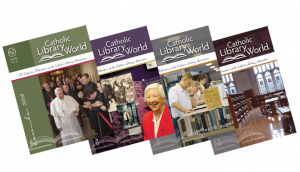Publication analysis
About the publication
Title: The New York Times
ISSN: 0362-4331 (Print) and 1553-8095 (Online)1
Purpose, objective, or mission: “The New York Times is dedicated to helping people understand the world through on-the-ground, expert and deeply reported independent journalism. This mission is rooted in our belief that great journalism has the power to make each reader’s life richer and more fulfilling, and all of society stronger and more just.” 2
“Open-minded inquiry is at the heart of our mission. In all our work, we believe in continually asking questions, seeking out different perspectives and searching for better ways of doing things.”3
“The goal of The New York Times is to cover the news as impartially as possible — “without fear or favor”. 4
Website: http://www.newyorktimes.com
Target audience: Readers interested in high-quality news, information, and entertainment.
Publisher: The New York Times Company. 5
Peer reviewed? No. 6
Type: Civilian daily newspaper for the general public.
Medium: Print and online.
Content: News – local, national, and worldwide; politics, business, opinion, technology, science, health, sports, arts, books, style, food, and travel. 7
Frequency of publication: Daily.
About the publication’s submission guidelines
Location of submission guidelines: http://www.nytimes.com/content/help/site/editorial/op-ed/op-ed.html and http://www.nytimes.com/content/help/site/editorial/letters/letters.html
Types of contributions accepted: “The New York Times accepts opinion essays on any topic for both the daily print page and online section as well as the Sunday Review, the International edition (which is edited out of London and Hong Kong), and other themed series. Published pieces typically run from 400 to 1,200 words, but drafts of any length within the bounds of reason will be considered.” 8
“Personal or explanatory essays, commentary on news events, reflections on cultural trends and more are all welcome. We’re interested in anything well-written with a fact-based viewpoint we believe readers will find worthwhile.” 9
The New York Times also accepts Letters to the Editor. “We encourage a diversity of voices and views in our letters. Letters should preferably be 150 to 175 words, should refer to an article that has appeared within the last seven days, and must include the writer’s address and phone number. No attachments, please. Letters should be exclusive to The New York Times or The International New York Times. We do not publish open letters or third-party letters.” 10
Submission and review process:
For Op-Eds: “Due to the large volume of messages we receive, we have to pass on much material of value and interest. If you do not hear from us within three business days, you should feel free to offer it elsewhere.” 11
For Letters to the Editor: “Writers of letters selected for publication will be notified within a week. Letters may be edited and shortened for space. Due to the large volume of submissions we receive, we cannot personally acknowledge each submission. If we decide not to publish your letter you will receive an automated email reply.” 12
Thomas Feyer, the letters editor, gives tips for getting your letter published in his article Editors’ Note; The Letters Editor and the Reader: Our Compact, Updated
Editorial tone: Informational and investigative.
Style guide used: None specified.
Conclusion: Evaluation of publication’s potential for LIS authors
Difficult due to competition, their popularity, and the limited area/type of submissions accepted. If successful, would be a great platform to speak to a large audience that appears would be supportive of LIS issues. Would also look excellent on a resume or CV.
“We seek people with different backgrounds, different skills, different lived experiences. We need experienced journalists and those beginning their careers. We need people in New York and in countries around the world.” 13
Here are some helpful tips for getting published with The New York Times: How to successfully pitch The New York Times (or, well, anyone else)
Audience analysis
About the publication’s readers
Publication circulation: The New York Times has more than 150 Million monthly global readers, with 6.5 million total subscriptions. 14
Audience location and language or cultural considerations: Based in New York, NY, with readers across the U.S. and around the world. The print edition is published in English. Online content can be viewed in English, Spanish, and Chinese languages.
The New York Times also has printing locations around the world to build a global audience. “The New York Times International Edition is an English-language newspaper printed at 38 sites throughout the world and sold in more than 160 countries and territories.” 15
Reader characteristics: According to their media kit, The New York Times is “the #1 Destination for Opinion Leaders, 60% of US audience is made up of Gen Z and Millennial readers, and digital affluent visitors wield over $1 trillion in total buying power.” 16
“In a report released by Pew Research, 32 percent of those who regularly read the New York Times are less than the age of 30. Approximately 56 percent are college graduates and 38 percent are high-income earners.” 17
Knowledge of LIS subject matter: While is is likely some librarians read The New York Times, the majority of readers will have limited knowledge of LIS issues and jargon.
Conclusion: Analysis of reader characteristics and their potential impact on authors
Writers need to submit work that will appeal to the worldwide audience. The New York Times is a popular and influential publication with readers from varying backgrounds, some of which will likely have an interest in library related pieces pertaining to current issues and ideas.
Last updated: October 3, 2020

